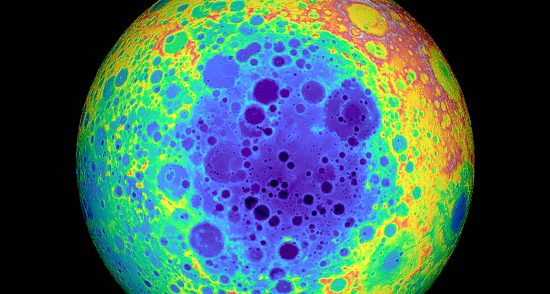
September 3, 2020
The Moon is a “dead body” that is billions of years old, according to theory. It has no intrinsic magnetic field and it does not radiate, except to reflect the light that it receives from the Sun. But could electrical forces have recently shaped the lunar surface?
Consensus theories tend to be conservative. They take their cues from the past, and use history to model other celestial bodies. Lunar “graben”, for example, result from slow crustal movements, similar to plate tectonics on Earth, even though there is no evidence that the Moon has crustal plates. Electric Universe theory proposes that structures in space ought to model what is found on Earth, instead of the other way around.
The theory of past selenological activity implies that the Moon was born long ages ago, perhaps several billion years or more, and has not changed much, since what happened then is said to be visible, today. However, there are high albedo anomalies on the Moon associated with areas of crustal magnetism imprinted on its surface. Also, what causes gravitational readings pointing to more or less density in those regions? Are metal-rich asteroids embedded in the lunar regolith? High density asteroids do not explain areas where less mass is detected, though. Some of the low mass linear anomalies pass through large craters.
The Moon is not uniform: there are elevation differences between the two hemispheres. The nearside of the Moon is flat, with vast maria, whereas the farside is dominated by mountains and is heavily cratered. According to a recent press release, “…the differences were caused by a wayward dwarf planet colliding with the Moon in the early history of the solar system.”
As mentioned in a recent Picture of the Day, when there is only gravity and kinetic energy in your bag of tricks, the way things form in space can only be due to those processes. Therefore, impact scenarios are all that astrophysicists come up with.
An important point that is overlooked in the announcement is that the Moon and Mars are similar in many ways. The south pole of Mars is covered with dust and debris and there are thousands of craters at every scale: from the largest crater in the Solar System, Hellas Planitia, to those too small to see from orbit. The north pole of Mars might be considered a crater, itself, since the northern latitudes are six kilometers below the planet’s mean elevation, with few smaller craters.
This correspondence to features on the Moon is striking. It could be that both Mars and the Moon experienced similar forces at some period. Were those forces the result of impacts by rocky bodies or vulcanism? They might have come from a source that is rarely considered by planetary scientists: electricity.
At some time in the recent past, a flow of electric charge appears to have impinged on the Moon, removing material from one hemisphere (nearside) and depositing it on the other (farside). Those electric discharges also formed the great rayed craters. How recent those events must have been can be gauged by the superficial nature of the bright rays and their extent. The craters are not due to impact because the rays join the craters tangentially and not radially.
Plasma discharges can jump from one location to another, excavating craters, while melting the surrounding regolith. Electrons are pulled toward the center of the discharge channel, ripping rocks apart, and dragging neutral material along with them. The resulting dust is sucked up into the electromagnetic vortex and ejected into space. This explains why the bottoms of the lunar maria are smooth and flat, with little or no blast debris. Subsurface electric currents tend to melt and concentrate matter, which may also explain why there are mass anomalies associated with them.
As has been written elsewhere, since the hemispheres and not the poles of the Moon are where the most intense electrical activity seems to have occurred, it is not beyond consideration that the Moon is no longer in its original orientation with respect to Earth. What we call the near and far sides of the Moon might once have been the two polar regions.
Stephen Smith
The Thunderbolts Picture of the Day is generously supported by the Mainwaring Archive Foundation.












